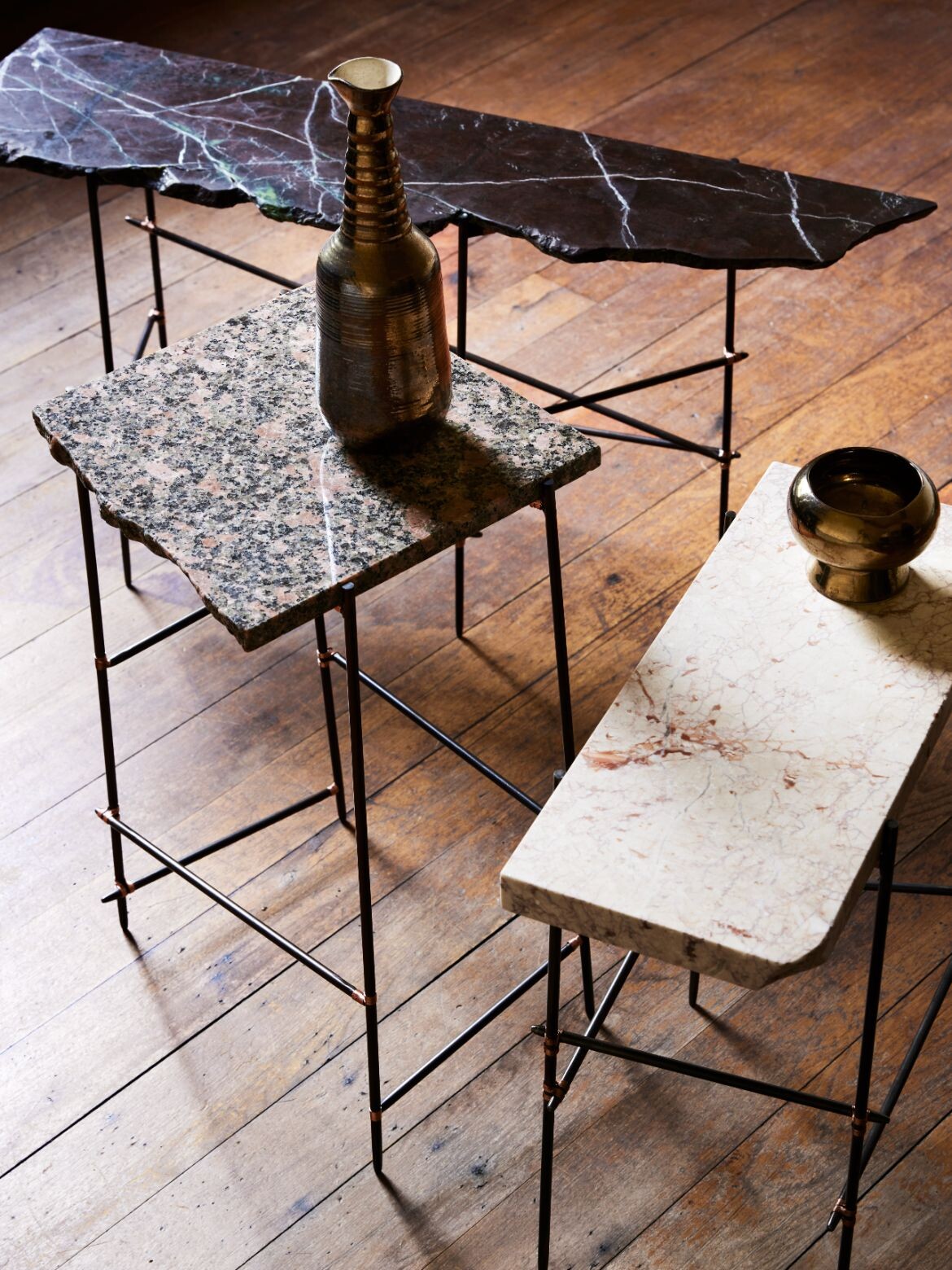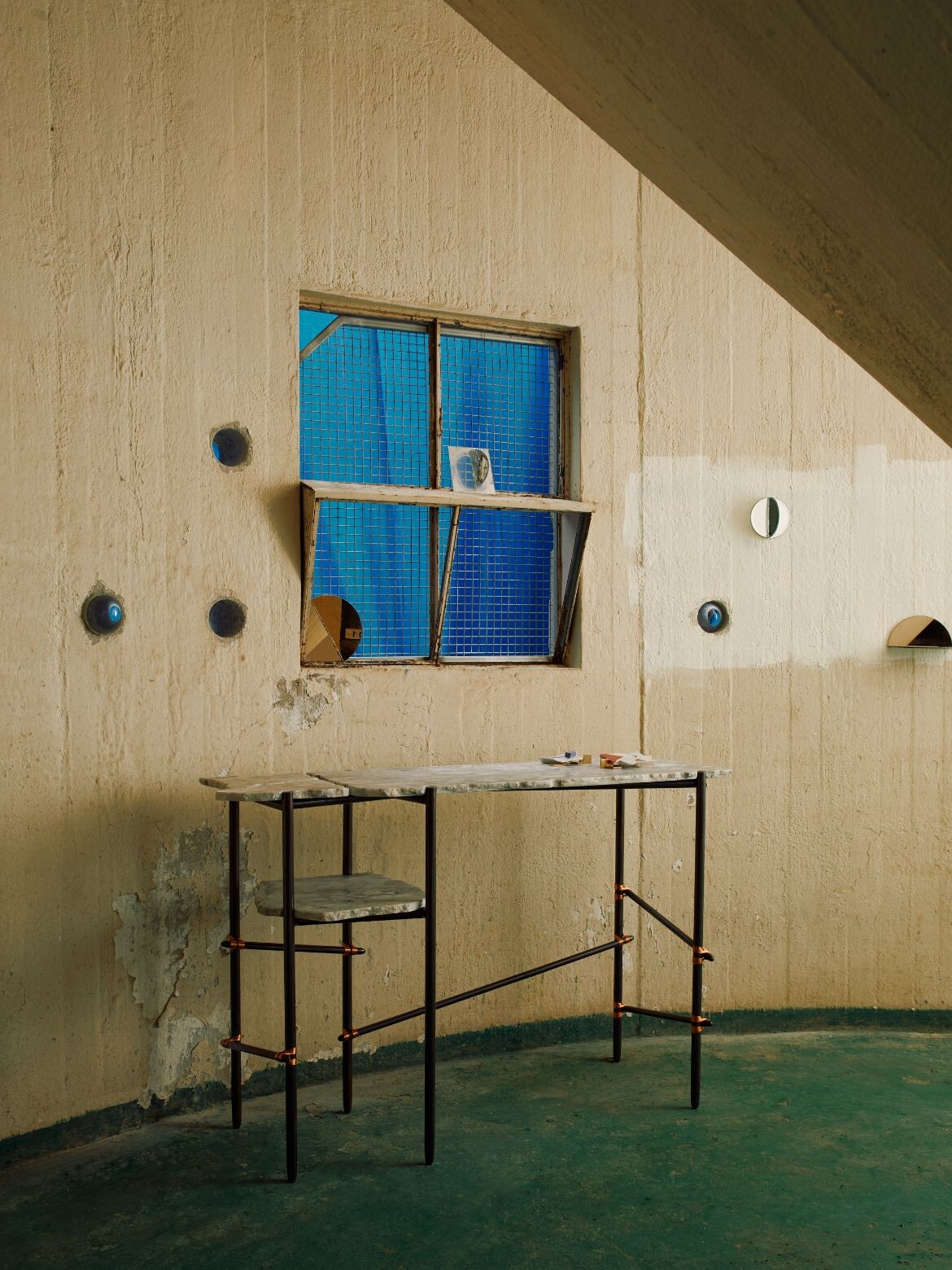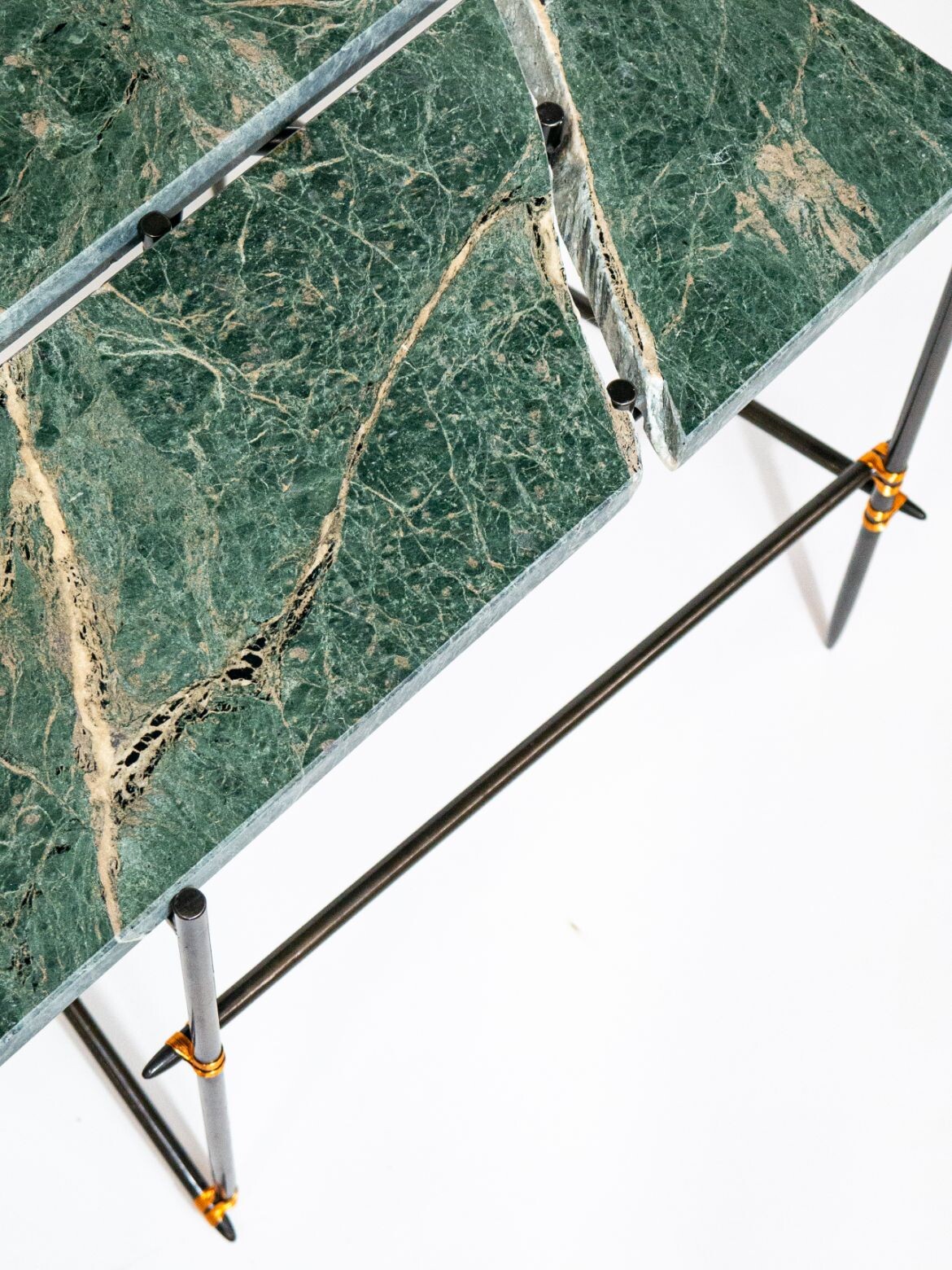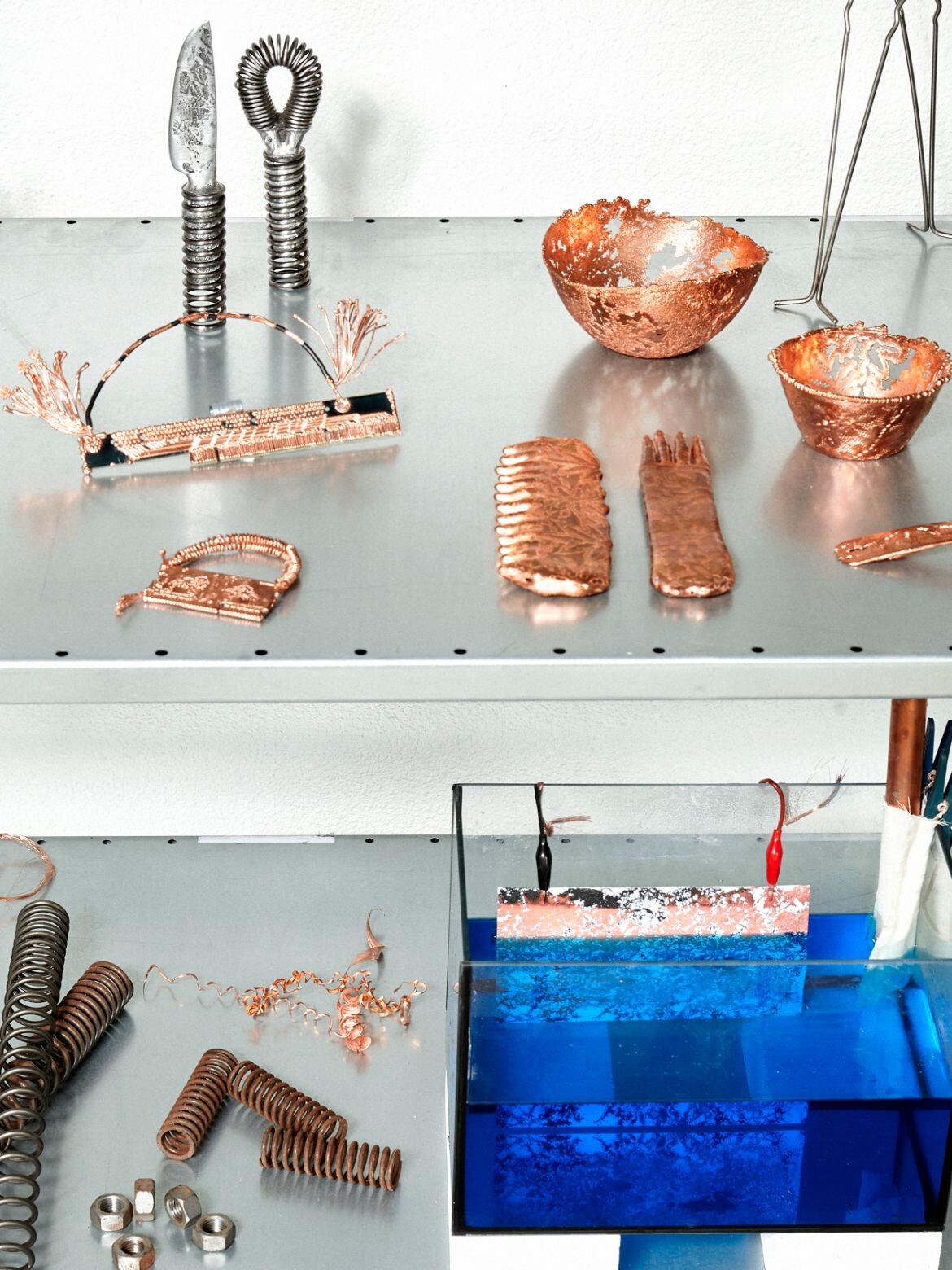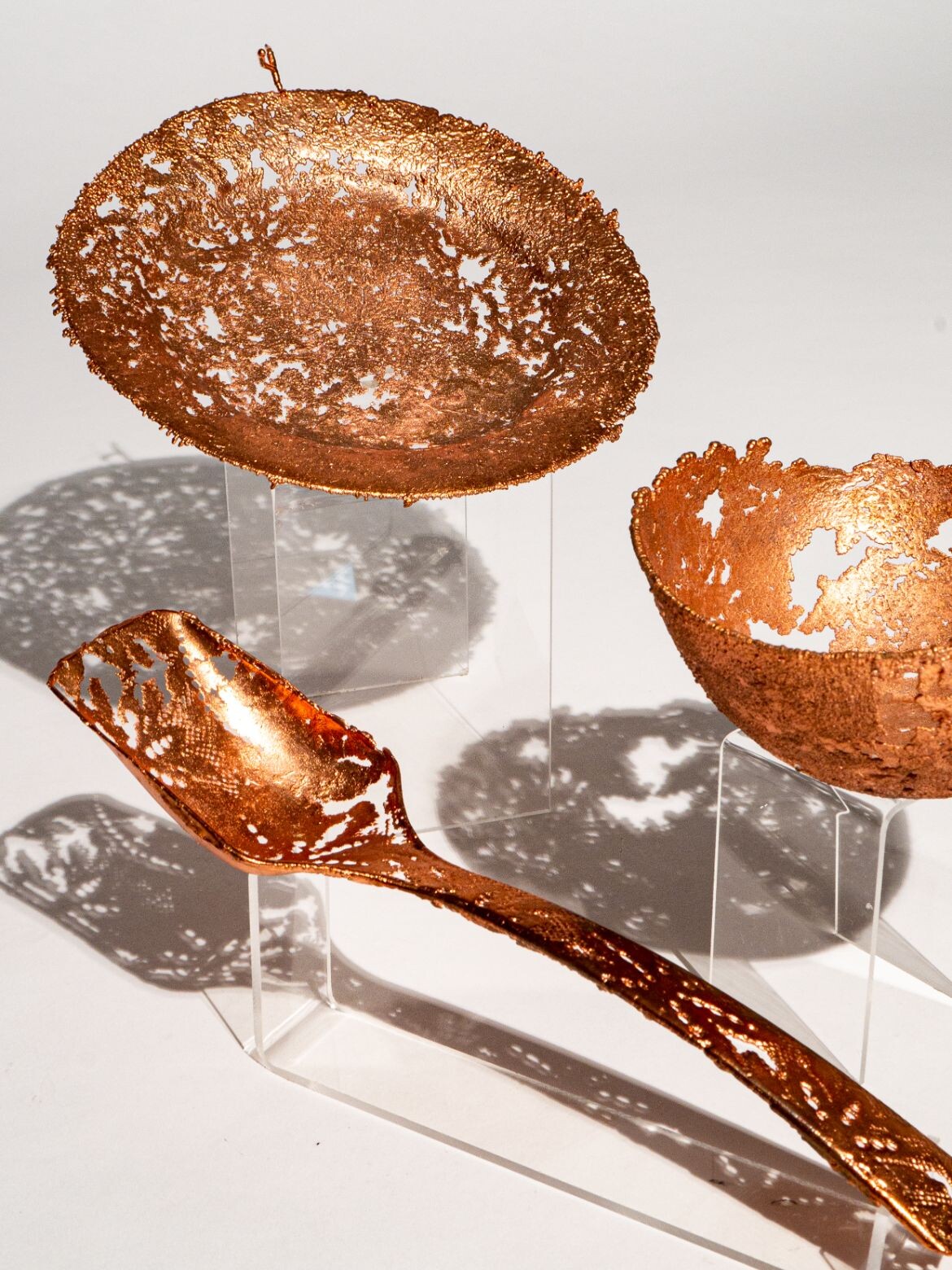The coming year is looking busy for Marlo Lyda, an enterprising designer-maker. Alongside the newest iteration of her well-known Remnants collection, which has been exhibited in both Melbourne’s Villa Alba Museum (2022) and Sydney’s Powerhouse (2022), Lyda has two other collections in the works – and that’s just the tip of the iceberg.
The use of waste materials (although Lyda might not call them that) is a common thread that links her works.
“We call it waste but it’s not waste. It’s just another material. These materials are liberating because you have nothing to lose and everything to gain,” she says.
“It allows me to source cheaper materials and really spend the time and intention – basically TLC – on elevating these materials into something that can be beautiful. So I don’t really see waste as waste, I see it as a resource that I can work with and find exciting.”
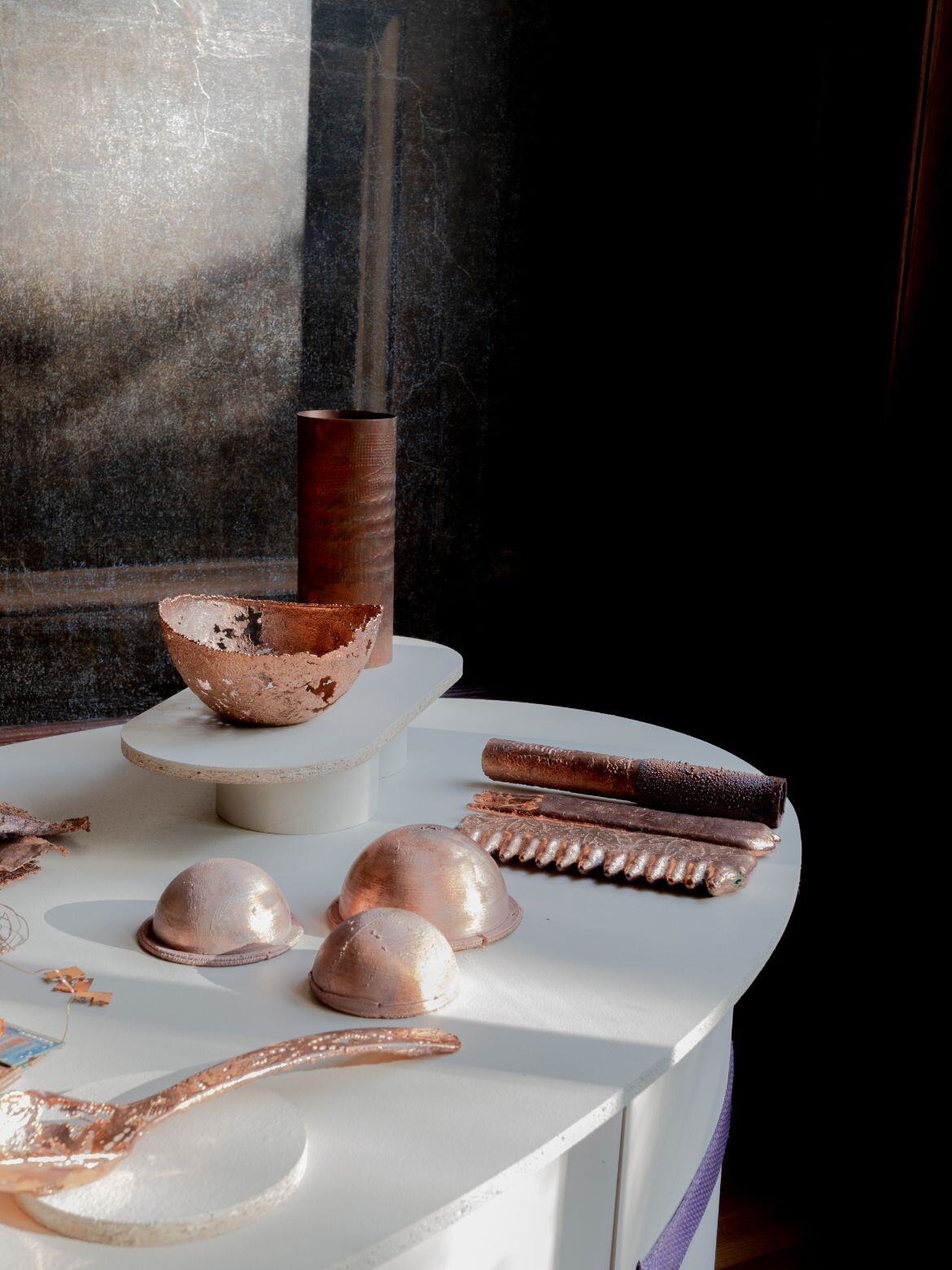
Speaking to this sentiment, Lyda’s Remnants collection is developed from pieces of stone and marble that are broken, fractured or too small for common use. She pairs them with simple steel scaffolding and elegant copper detailing to elevate the stones from discarded matter to functional art.
Her new collection will include two lights – new territory for Lyda. When asked about this new direction, she says it comes down to the materials she’s sourced. “It’s about listening to the stone and asking, why would I use onyx for a coffee table when it doesn’t herald what is so special about the material?” The lights will reflect the aesthetic of the Remnants coffee tables but use semi-transparent onyx.
Lyda’s practice is entrenched in an appreciation of materiality, something she began recognising from a young age, perhaps influenced by her mother Fiona Lyda who founded the prominent Sydney design brand, Spence & Lyda.
It’s impressive to see what the young designer has already achieved. Lyda was awarded one of the NSW Design (Early Career) Fellowships and the coming year is looking busy for the Sydney-based maker. Alongside Remnants 3.0 and a small home range, Lyda is in the process of planning a collection with ceramicist/friend Georgia Stevenson, who is working to incorporate post-demolition material such as old red brick into clay bodies and glaze.
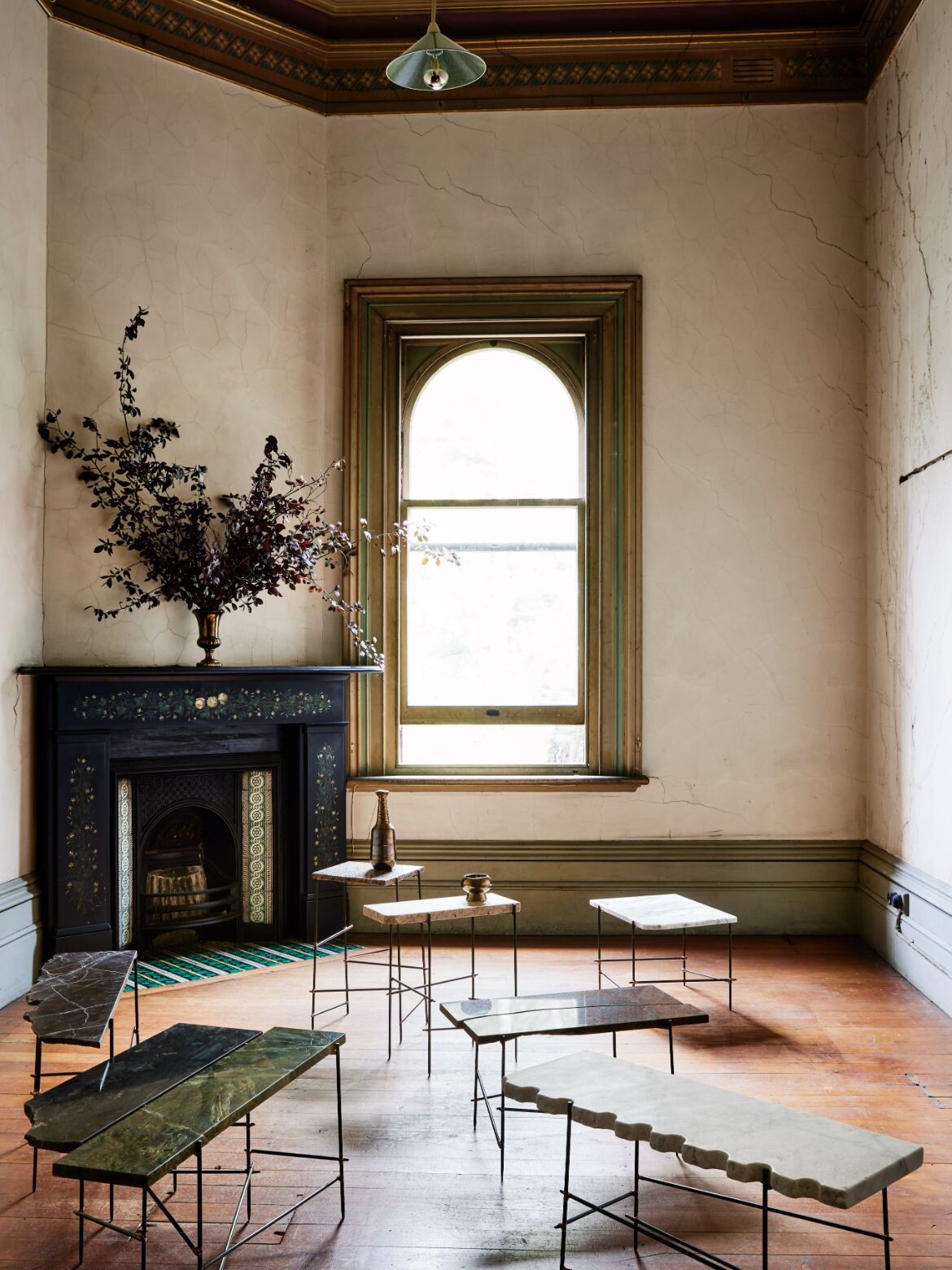
“I’m collaborating [with Stevenson] through my long love affair with contemporary extraction and e-waste,” says Lyda. The pair are contemplating working with fly ash – a byproduct from coal power plants – which acts as a strong binder, and copper tailings.
Lyda’s work has been part (NO THINGS), (SOME THINGS), and (ALL THINGS) MATTERS, a series of exhibitions which are spread over three years at Melbourne Design Week, displaying the slow process of design from concept to development. Lyda’s works in the exhibition are a continuation of her grad project Scraptopia, which saw her graduate Cum Laude from Design Academy Eindhoven.

It was during her time in Eindhoven that Lyda noticed a substantial rise in the Collectible Design movement, which she defines as functional art, or “design pieces exhibited and sold as though they’re artworks”. This movement, says Lyda, allows makers to reclaim their autonomy and use more experimental methods, and she has been part of encouraging its growth in Australia.
“[Collectible Design allows] makers to reclaim their autonomy in regards to using their hands and being experimental. It’s created some really incredible labour-intensive, personal works … Melbourne Design Fair is doing a really great job in heralding and holding a torch for that,” says Lyda.
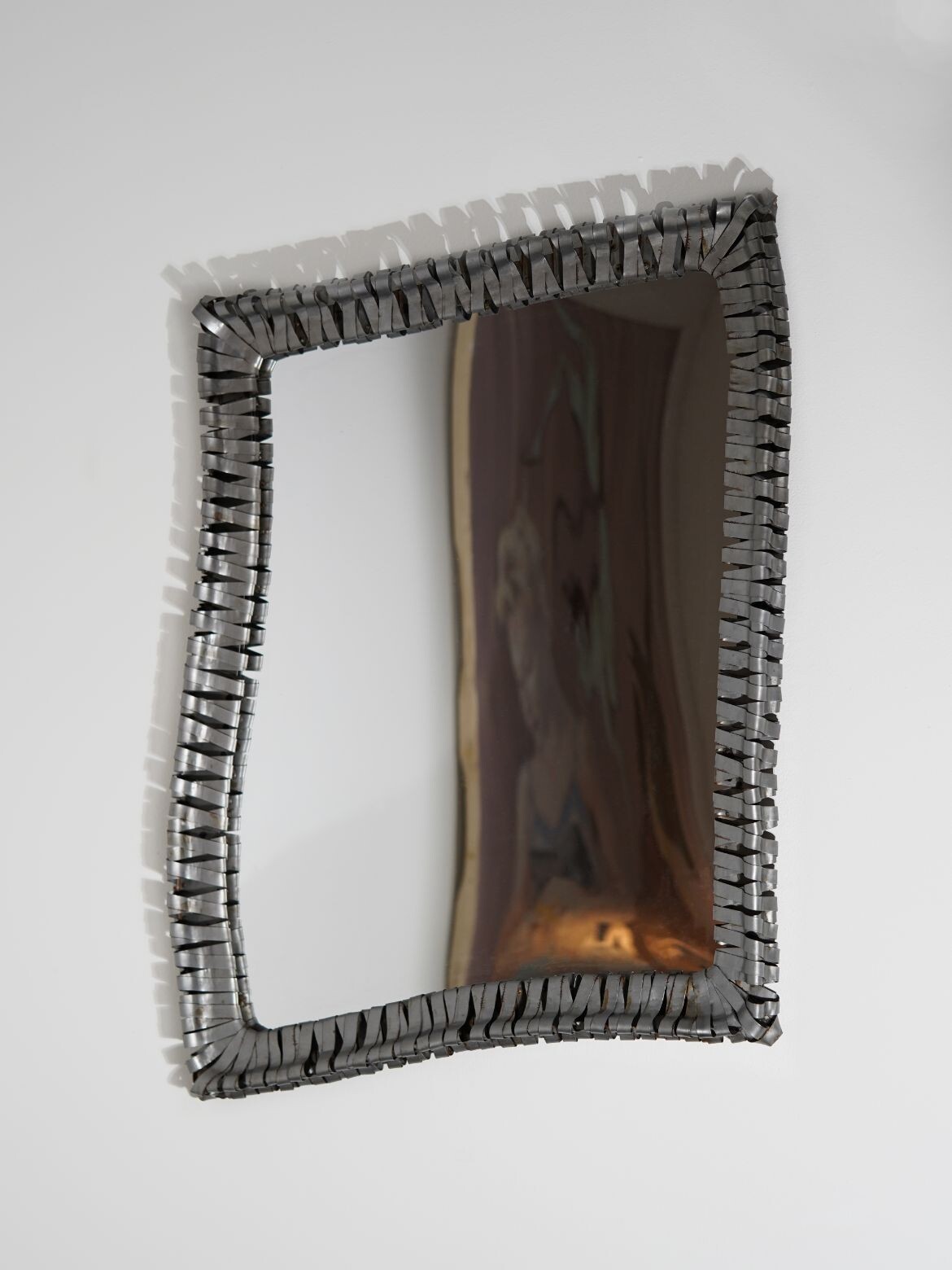
On social media, Lyda has been hinting at what to expect from Remnants 3.0. Her recent Instagram Stories have featured striking slabs of stone, lined up along walls – almost gravestone-like – ready to be revived with a second life by the designer.
Rather than hiding the fact that the stones have been discarded, their reuse is celebrated.
“Craftsmanship and materiality are incredibly important, and part of that is starting to show process to the Australian community and to teach about materials,” says Lyda.
Marlo Lyda
marlolyda.me

